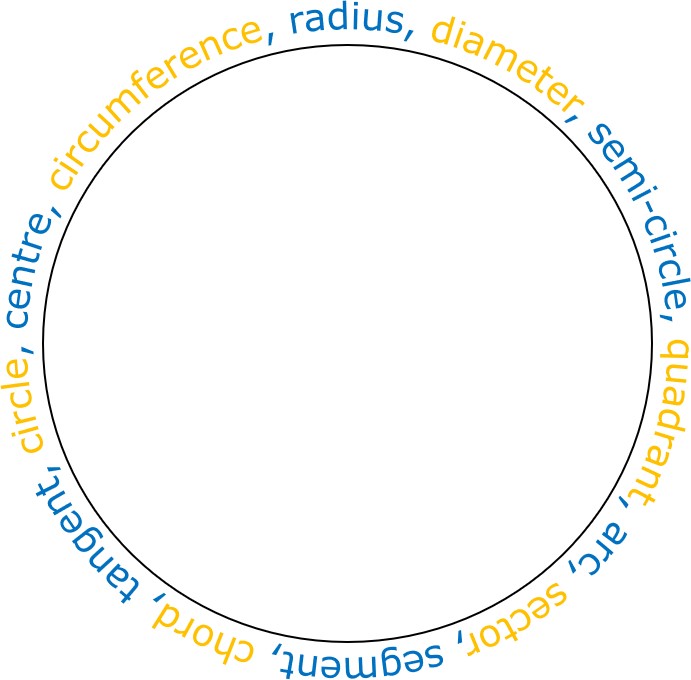
Parts of a Circle
Round and round the circle
A circle may not look as if it has many features, but wait till you see just what it does have. There are some features that are super important, and they'll help us with area and distance around the outside, a little later. Let's see some of those in this video.
But wait! There's more.
Don't forget the circumference, radius and diameter, but keep them in your mind as you discover even more about the circle in this video.
Time to play
Now that you know how to identify the following parts of a circle, use the applet to see if you are able to identify them.
Worked Example
Question 1
Identify the part of a circle shown in the diagram.

Segment
ADiameter
BChord
CRadius
D
Start by remembering the circumference, radius and diameter of a circle, and what they mean. From there, you can build up and look at how these features are part of others, such as a semi circle, sector etc.
Are they related?
Remember how we can find out the dimensions of a rhombus, say, if we know its area and one dimension? Well, we can do a similar thing with circles. You may wonder if the parts of a circle are related, and some definitely are. Have a look at how they are related, and how we can use what information we do have, to work out some information we don't have.
Worked Example
Question 2
If the circumference of a full circle is equal to $40$40 cm, find the length of the arc of the corresponding semicircle.

Whenever you need to find out the value of a part of a circle, think about what you do know, and if you can work backwards to find your answer. Think about how the parts of a circle are related to each other.

A fraction of your time, please!
Did you know that there is a connection between fractions, angles and circles? In fact, fractions help to explain angles, because we already know about fractions, so are a great way to get to know more about angles.
Let's see how we can divide a circle up by angles, using fractions, in this video.
Worked Example
Question 3
What fraction of the full circle is occupied by the shaded sector?

Fractions represent a part of a whole, so we can find the fraction of a circle by looking at the angle size as a fraction of 360°. The applet below can be used to see the angles and the fractions they represent.